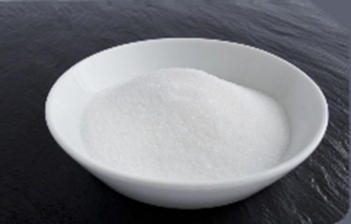Sodium tripolyphosphate (STPP) plays a significant role in various industries, particularly in food and detergents. However, its safety often raises questions about potential toxicity. This article explores the nature of STPP, its uses as a food additive, and scientific evidence to determine whether sodium tripolyphosphate is safe for consumption and use.
1. What Is Sodium Tripolyphosphate?
Sodium tripolyphosphate (STPP) is an inorganic compound with the formula Na₅P₃O₁₀. This white powder dissolves easily in water. Industries commonly use STPP in food as a preservative, emulsifier, and stabilizer. It also appears in detergents due to its ability to soften water and enhance cleaning power.
2. How Is Sodium Tripolyphosphate Used in Food?
In the food industry, manufacturers add sodium tripolyphosphate to improve texture, retain moisture, and extend shelf life. You can find it in processed meats, seafood, dairy products, and some baked goods. STPP acts as an emulsifier, maintaining the consistency of food products by preventing ingredient separation.
3. Is Sodium Tripolyphosphate Toxic?
Numerous studies have examined the toxicity of STPP. Regulatory bodies like the FDA and EFSA consider sodium tripolyphosphate safe when used within specified limits. They establish the acceptable daily intake (ADI) based on safety assessments, indicating that typical consumption levels do not pose health risks.
4. Potential Health Effects of Sodium Tripolyphosphate
While sodium tripolyphosphate is generally recognized as safe, some individuals may experience allergic reactions or sensitivities. Excessive consumption can cause gastrointestinal discomfort or sodium imbalances, especially in those with specific health conditions. However, typical dietary exposure rarely reaches levels associated with toxicity.
5. Sodium Tripolyphosphate in Detergents
STPP also serves as a common ingredient in household and industrial detergents. It acts as a surfactant, helping to soften water and enhance cleaning efficiency. Safety assessments show that STPP in detergents poses minimal health risks when used according to label instructions.
6. Food Safety Regulations Regarding STPP
Regulatory agencies have established strict guidelines governing the use of sodium tripolyphosphate in food. The FDA and EFSA set maximum allowable limits to ensure consumer safety. Food manufacturers must adhere to these regulations, ensuring that products containing STPP are safe for consumption.
7. Alternatives to Sodium Tripolyphosphate
As consumers increasingly demand phosphate-free products, manufacturers are exploring alternative emulsifiers and stabilizers. Ingredients like sodium citrate and modified starches are replacing STPP in some formulations. These alternatives offer similar functional properties while addressing consumer concerns about phosphates.
8. Consumer Concerns and Misconceptions
Many misconceptions surround sodium tripolyphosphate, often stemming from its chemical nature. It is essential to distinguish between toxic chemicals and food additives that are safe within regulated limits. Educating consumers about the role and safety of STPP can alleviate unfounded fears.
9. What to Look For in Food Labels
When shopping for food products, consumers should pay attention to ingredient labels. Look for terms like “sodium tripolyphosphate,” “E451,” or “stabilizer.” Understanding these terms helps consumers make informed choices about the products they purchase.
10. Conclusion: The Safety of Sodium Tripolyphosphate
In conclusion, sodium tripolyphosphate is not considered toxic when used according to regulatory guidelines. Its widespread use in food and detergents reflects its safety and effectiveness as a food additive. However, consumers should remain informed and make choices that align with their dietary preferences and health needs.

